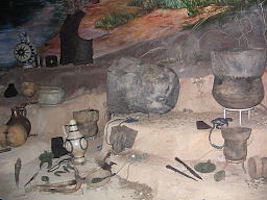WASHINGTON — Inadequate funding and unclear responsibilities have slowed the return of Native American remains and cultural objects to traditional caretakers, experts and lawmakers agreed during a hearing on Wednesday.
“After more than three decades of [the Native American Graves Protection and Repatriation Act] we again consider amendments to strengthen Indian tribes and Native Hawaiian organizations’ ability to protect gravesites and reclaim their ancestors and objects, all basic human rights that somehow we’re still fighting for,” said Valerie Grussing, the executive director of the National Association of Tribal Historic Preservation Officers.
The Senate Committee on Indian Affairs panel met to revisit NAGPRA, which requires Native American human remains and cultural items that have been removed from federal and Indian tribal land be returned to lineal descendants, tribes and Native Hawaiian organizations with “dignity and respect.”
Carmen Hulu Lindsey, chair of the Office of Hawaiian Affairs, shared with the panel why bones have an elevated status in Hawaiian culture.
“We identify each other by literally the bone. Not only do the iwi (bones) possess the spiritual power and essence of the individual, they are also our direct connection to our ancestors for communication and guidance. For we do not bury our dead, we plant them back into the earth from where they continue to nourish, heal and guide future generations,” Lindsey said. “This critical cycle has been disrupted.”
Under NAGPRA, over 84,000 ancestral remains and over 1.5 million funerary objects have been repatriated to Native American tribes and Native Hawaiian organizations, according to Joy Beasley, associate director of Cultural Resources, Partnerships, and Science at the National Park Service.
“While progress is certainly being made, the journey continues for tens of thousands of ancestors, and millions of cultural items to find their way home,” said Chairman Brian Schatz, D-Hawaii.
In 31 years, fewer than half of the Native American remains in collections have been returned to their traditional owners. The remains of more than 117,576 Native Americans are still in the collections of museums and federal agencies. Of those, 94% have not been affiliated to any present-day tribes or organizations, complicating the repatriation process, according to Beasley.
When repatriating items from the possession of universities and museums under NAGPRA, there are often lengthy consultations with the Bureau of Land Management, according to Sen. Catherine Cortez Masto, D-Nev. Cortez Masto said some Nevada tribes’ efforts to recover their ancestral property have led to long and costly litigation.
Bureaucratic interruptions to the repatriation process also prevent cultural healing, according to Rosita Worl, president of Sealaska Heritage Institute.
“In addition to halting the repatriation process, what was also halted was dealing with the trauma of the removal of our ancestral remains, dealing with the removal of our sacred objects,” Worl said.
The Department of the Interior hopes to remedy these issues via an upcoming new regulation proposal for NAGPRA, which Beasley said will clarify the roles, responsibilities and timeline that agencies should be working under in accordance with the law.
Though $15 million in grants were issued in the first 30 years under the law, countless items still need to be repatriated.
“Realistically, what type of funding would be needed to finally see the goals of this model realized?” Cortez Masto asked the panel, emphasizing that inadequate funds are delaying efforts.
After a 2010 report from the Government Accountability Office determined that key federal agencies had not fully complied with NAGPRA, the Natural Resources and Environment team within GAO, asked agencies how much time and money would be needed to properly implement the act.
Anna Maria Ortiz, director of the NRE team, said most agencies estimated they would need eight to 10 years, with some going as high as 28 years.
“In many cases, agencies estimated that it would cost hundreds of thousands or even millions more than they currently had appropriated,” Ortiz said.
Grussing said her team only receives enough federal funding to cover an average of one staff member and that funding is not allowed to be used for NAGPRA duties.
“A system that makes tribes compete for unlimited funding for the most sacred and foundational restorative work is re-traumatizing,” Grussing said.
The DOI is trying to remedy some of these issues with proposed regulatory changes drafted after receiving 71 written comments from Indian tribes and Native Hawaiian organizations across the country. The proposal is set to be published for public comment early this year.
In the 30 years since NAGPRA was enacted, the GAO has grown to appreciate the challenges agencies face in implementing the law, as well as the importance of doing so, Ortiz said, adding that it embodies the unique relationship the U.S. has with Native Americans.
“NAGPRA seeks to address a small portion of the many wrongs that federal policies have cost over time,” she said.


